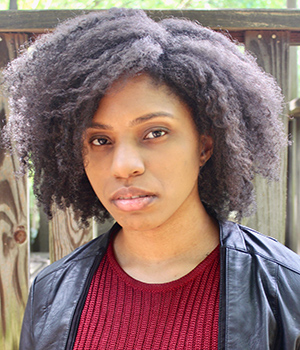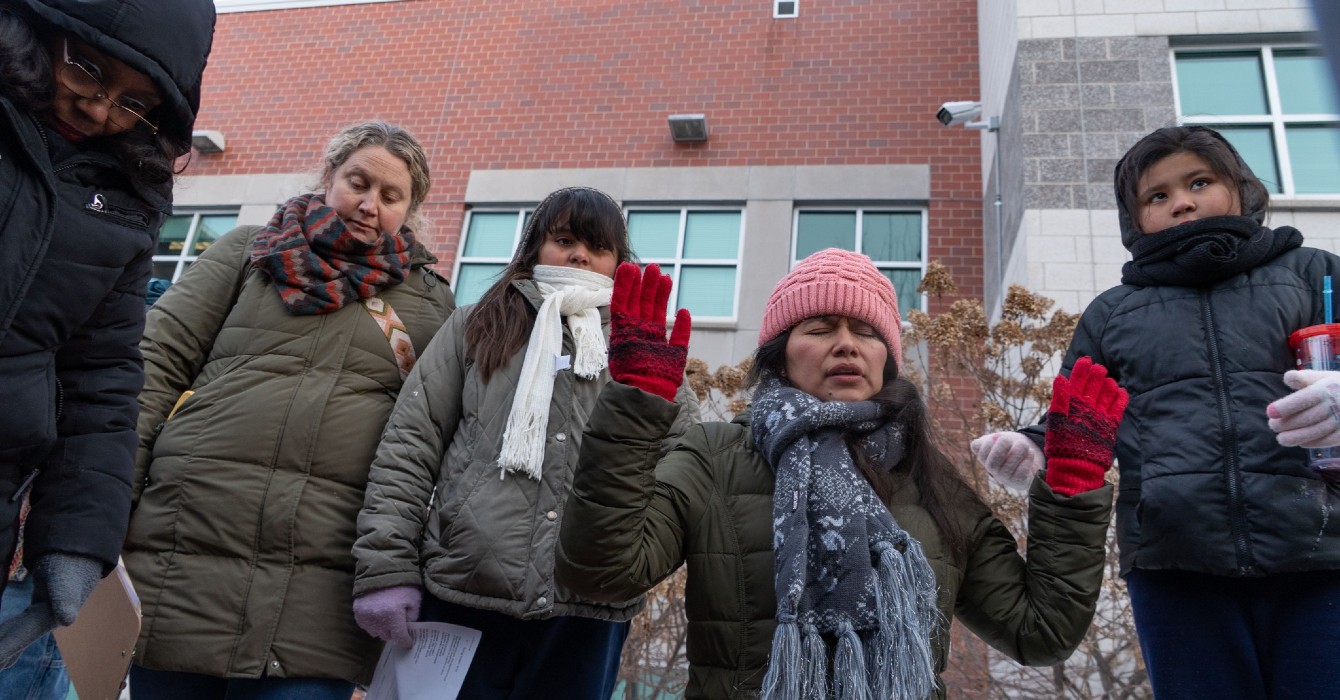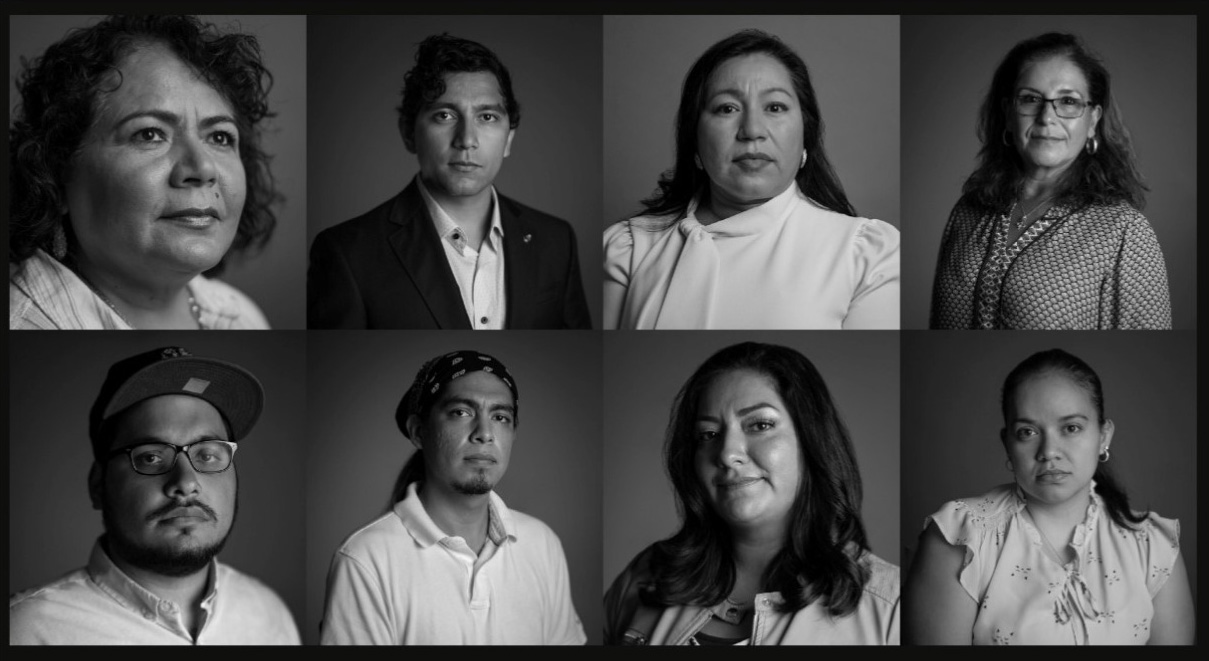Almost a decade after they committed to reading James Baldwin together, Jamie McGhee and Adam Hollowell are encouraging others to consider the late writer’s calls to action.
The two first met when McGhee was a student at Duke University and Hollowell was working at the university’s chapel. After the death of Trayvon Martin and the acquittal of the man who shot him, they looked for something that might help them process the moment. McGhee and Hollowell turned to canon, Baldwin’s “The Fire Next Time.”
Out of the shared experience of reading and then writing together, they have co-authored “You Mean It or You Don’t: James Baldwin’s Radical Challenge,” a book that pairs reflection on Baldwin with an invitation to activism. The authors write about finding the courage to change, embracing a radical moral challenge and looking to a community of collaborators.
“When one helps or when one steps into a different [context], they will end up changing,” McGhee said. “Their viewpoints might change, or they’ll find things they’ve never seen before…If you keep going, you’re going to be confronted with realities you might have been blind to or opinions that might differ sharply from your own. You will change the person [you are], but the process can be a bit terrifying from the outset.”
Hollowell added: “Baldwin often brings readers to a moment of decision and asks for a response. We call that Baldwin’s radical moral challenge. You mean it or you don’t. But we also wanted to leave the reader feeling like they are a part of a community when they experience that challenge.
“Most of our action prompts involve connecting with other people — looking for groups that are already working in your community or partnering with colleagues, neighbors, friends in work for justice. We wanted to accept the intensity of Baldwin’s moral challenge but also equip and empower the reader to feel connected to others in their response to that challenge.”
McGhee and Hollowell spoke with Faith & Leadership’s Aleta Payne this summer. The following is an edited transcript.
Faith & Leadership: There are a lot of books that are meant for thoughtful discussion. This one is thoughtful discussion — and then you say, “OK, here’s what you can do next.” What was the impetus behind that?

Adam Hollowell: When we started writing [in conversation] with Baldwin, I was at a church and was writing prayers on a weekly basis for worship, and I was also working in student ministry and was praying with students as a part of my day-to-day job. The first project that [Jamie and I] wrote was a series of prayers, and those felt like an important spiritual resource for this particular moment.
When we returned to the project four years later, the same things were happening in the country over and over. We wanted to write new words that were more focused on concrete actions.
That doesn’t mean we are done with prayer, and it doesn’t mean that prayer is inaction or inactivity. It means that there are times when you feel like all you can do is pray, and there are times when you feel like praying is not enough. Both of those are important feelings. This book is very focused on concrete action, and it is very committed to helping readers activate in their local communities as a complement to the work of prayer.

Jamie McGhee: It’s not that prayer is inaction, but when people stop at the thoughts and prayers, that is fully insufficient. This book is not replacing the earlier project focused on prayer but rather a step beyond. I do believe a lot of people have really good intentions and either they don’t know a lot about a certain subject, such as mass incarceration, for example, or it doesn’t directly affect them. They’d like to know more, and if they knew about things, then they could get involved. But they also don’t really know how to get involved without causing more harm.
There are so many logistical barriers to entry; this book is an attempt to overcome some of those barriers and invite people with an easy road map of how you get started with the things that you believe and want to do to help.
F&L: You began 10 years ago, and Baldwin predates that. But much of the book feels of the moment; systemic oppression has always been there. It’s almost like you all anticipated some of the last few months’ issues — the resurgence of book bannings, ahistorical teaching, legislation around gender identity, gender expression, sexual orientation. What is the continuum you see?
AH: We wrote this project with a very attuned sense of the words that were Baldwin’s and the words that were ours. Many of Baldwin’s writings and speeches feel timeless or eternally relevant in the United States. Baldwin speaks with just enough specificity for you to know that he’s speaking directly to you, but just enough generality for decades and decades and decades of readers to connect with his work. We wanted to capture the intensity of Baldwin’s perpetually relevant prophetic voice while also doing our work to meet Baldwin in this particular moment.
This book is full of references to community groups, URL links to databases of organizations, switchboard phone numbers for elected representatives, and those specifics won’t be relevant forever. We know that. We’ve written it that way on purpose. Baldwin supplies the connection to American history and the enduring nature of the challenges that we face. We aim to meet Baldwin with a sense of intensity and specificity about the demands of the present moment, right now.
JM: I really like comparing [Baldwin’s] earlier work with his later work to see his transformation as a person. One way he really transforms is in his hopefulness or not. I believe in his early writings he directly addressed America: “This is what you need to do; this is what needs to change. I’m very hopeful about what America could do if we just address those things.” Then over the span of the next 20, 30 years, he sees continually those things aren’t being addressed and the same cycles are continuing and continuing and continuing. And they were continuing through his death in the ’80s.
I think Baldwin is a prophet, and he has a wonderful way with words, because words could probably span different cultures and span time periods on their own. On a practical level, a lot of the reason they are still relevant is because, as an American society, we keep continuing the same spirals over and over and over again without really addressing all of the problems. A lot of the same problems we have today are some of the same ones, maybe on a different scale, that Baldwin had when he was writing.
F&L: Could you talk about liberatory horizons?
AH: There’s been a public debate in the last few years about Martin Luther King Jr.’s phrase that the moral arc of the universe bends toward justice. Some writers and activists have said that knowing the moral arc of the universe is essential to joining sustainable justice work. Other writers and activists have said that the only way the arc of the universe changes is if we bend it. Sometimes Christians are in the first camp, and sometimes Christians are in the second camp.
For us, liberatory horizons are the things that you hold to when you want to let go of the work. We don’t know exactly what those horizons are for each leader. We don’t need to know. We don’t need to weigh in on the debate about the moral arc of the universe, but we do want readers to identify for themselves what sustains their commitment.
The section on liberatory horizons follows a few paragraphs on activist burnout. We know, both from personal experience and from the research literature, that some people rush into activist work with a brightly burning fire but it doesn’t last very long. Some of the longer-term workers on a particular issue can be frustrated, harmed, set back, displaced by that new-activist energy. The section on liberatory horizons is about identifying and connecting with what sustains you in the long term so that your commitment to the work doesn’t burn out too quickly, doesn’t burn up the people around you, but remains steady for you to approach the horizon as a part of a community.
JM: We emphasize the fact that everyone has their own liberatory horizon, and that’s going to look different for everyone. There’s no single way to do activism. When I was starting at 16, 17, 18 years old, I thought there was one way to do activism, to be in the street protesting, because that’s what I saw. There’s a lot going on behind the scenes that I didn’t see, and a lot of other small things, a lot of cogs in the giant machine, that I think a lot of people with good intentions aren’t really aware of.
Some people do burn out, because they haven’t quite found their place, because they don’t know all of their options. Finding your own liberatory horizon comes with trying out a lot of different things and then figuring out what, personally, gives you life and then going with that.
A lot of times, it won’t just be the [demonstrations]; it won’t necessarily just be the protests. It might be, but there are so many other things. And I think the invitation to find your liberatory horizon is also an invitation to explore and to figure out where you fit and want to fit into the wide open.
Baldwin supplies the connection to American history and the enduring nature of the challenges that we face. We aim to meet Baldwin with a sense of intensity and specificity about the demands of the present moment, right now.
F&L: Something Baldwin talks about and that you held up is this notion that there’s the individual piece of activism but there’s also a community piece, and finding that community. American culture puts so much emphasis on the individual and individualism. Could you speak to community in this?
JM: I think there’s such an emphasis on individualism that can be truly detrimental to long-term work. I think community is, at its base, what will change the world. It won’t be one person, contrary to the narrative that we are fed, specifically in the U.S. On a practical level, community is there for challenging you on beliefs, planning greater movements. Community is there for people who have done this before, people with experience.
Sometimes it might be easy to get siloed into a single way of thinking or a single way of “I have to do one thing; I have to be the one to change something.” Really, it is a larger community effort, whether it’s battling burnout or trying to figure out how to mobilize a massive group of people on a national scale.
It really starts with connection, and the connection is what will sustain people, especially at the beginning of their journey into this. I think that’s one of the most important elements of long-term sustainability — having people around you who are also doing it with you. So you don’t take on the mantle of saving the world by yourself.
AH: It’s also important to me that community describes something that’s very painful for some people, and community describes experiences of redemption, judgment, pressure, harm. Baldwin knew better than most that there are times when you have to leave the place that you’re in in order to save yourself. But that was not Baldwin’s final word. In his final days in France, as his body was breaking down, a community of people gathered around Baldwin, and that gathering was a witness to the people who made him the person that he was.
In the book, we aim to honor the reader’s need to step away like Baldwin did, but we also try to call the leader into connection, as the people who loved Baldwin called him into connection.
I’ll add one more thing. The title of the book is “You Mean It or You Don’t,” which is taken from an exchange Baldwin had with a student in the ’80s. But the last line of the book is, “Either we mean it, or we don’t.” And that is our subtle nudge to Baldwin — that the moral demand presses us into relationship with one another.
F&L: What more would you like people to know about this book that we haven’t discussed?
JM: I think the art-speech aspect of social change can be sometimes undervalued and overlooked. Every time I look, there are so many articles about whether art can be used as activism. What is the role of art in activism?
Baldwin described himself very much as the artist. Some people don’t necessarily consider themselves artists but can find an outlet, find something useful, in art. At the end of the book, we do encourage people, just even for themselves, to express whether they’re angry, confused or hurt, to take those feelings and put them into something artistic. You don’t have to show anyone. It doesn’t have to have any wider significance. It doesn’t have to change the world. Just make something. Express something.
For me, making art really brings me back into my humanity. If I read something, I’m just so overwhelmed with the state of the world that I have to pause. I primarily write fiction, so making some sort of art, some sort of fiction, even if it’s not connected at all to the world, helps me to remember that I’m human, my voice is important, and I can create something. I don’t have to lie helplessly and watch the world burn. I can go out, make and create and build beautiful things. Things are being destroyed, yes, but also goodness can be brought into the world.
I also think art is useful for social change. Art can [prompt] subtle changes that might not be immediately apparent. Baldwin, for example, talks about how reading as a child really opened his mind to so many things. I don’t think we’d have the fiery Baldwin we have now if his mind weren’t opened through all of the many, many books that he went through as a child. Books essentially changed his life; they saved him.
For a lot of people, that is true. You go to a play or see any movie, watch a performance — it might not change anything explicitly. You might not come away from reading “Giovanni’s Room” and go, “Wow, I need to go advocate for more LGBT rights now.” That’s not the point of the book. The point of the book can be to be a more compassionate, humane person, to make you think, put yourself in the shoes of people, to open your mind a bit to the world going on around you and make you more able to see, more able to look for the small details, more willing to accept a reality different from your own.
I think it’s a very subtle change that, over the course of time, can lead you into different avenues of compassion and activism. The last chapter of the book, about art, is really just an invitation for people to explore that, play and see what is the art going on in your community. It gets overlooked. It gets undervalued. But I do think it’s a beautiful part of this whole process.
I think community is, at its base, what will change the world. It won’t be one person, contrary to the narrative that we are fed, specifically in the U.S.










